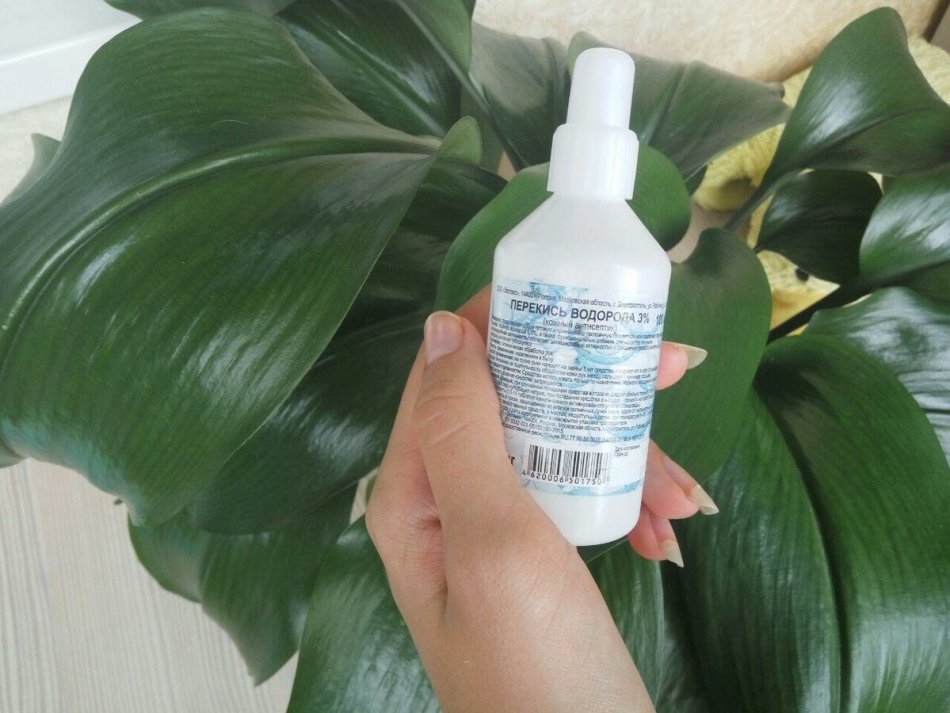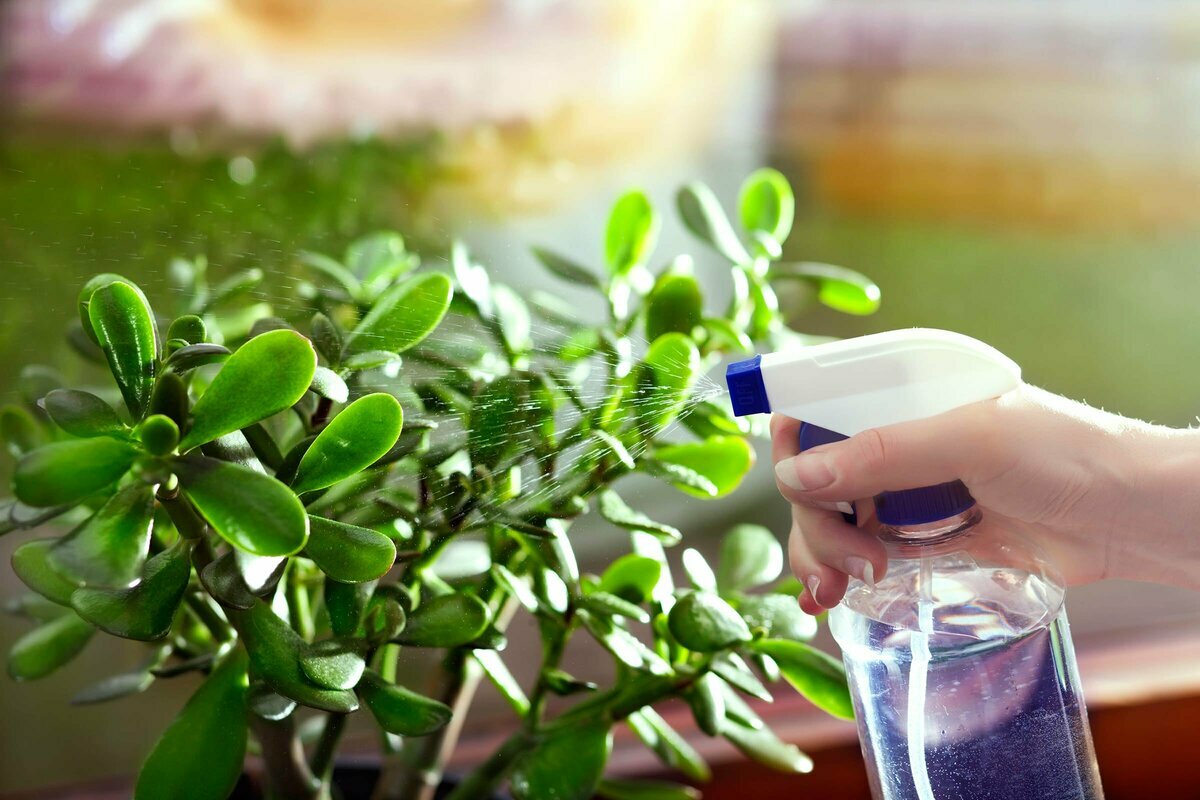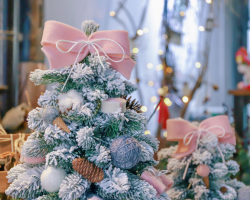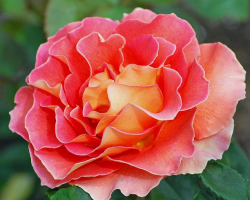Instructions for using hydrogen peroxide for indoor plants.
Content
- Why should room plants with hydrogen peroxide?
- How to feed flowers with hydrogen peroxide?
- Hydrogen peroxide for indoor plants: methods of use
- Hydrogen peroxide for watering indoor plants: benefits
- How to feed geranium with peroxide?
- How to feed geranium iodine and peroxide?
- How to feed the orchid with peroxide?
- How to understand that you need to feed indoor flowers with hydrogen peroxide?
- How to feed home flowers with hydrogen peroxide and glucose?
- Hydrogen peroxide for indoor plants: reviews
- Video: Plant peroxide
Hydrogen peroxide- this is A common remedy that is widely used by housewives for the processing of wounds. This is a magnificent antiseptic that copes with mushrooms, bacteria and viruses. However, this is not the only scope of peroxide. In this article, we will tell you how to use hydrogen peroxide to feed indoor plants.
Why should room plants with hydrogen peroxide?
All housewives use the product as a preventive and to treat some diseases. Below can be found with the sphere of use of hydrogen peroxide for indoor plants.
Why indoor plants of hydrogen peroxide:
- Prevention of a black leg and basal rot
- For soil processing in the event of mushrooms, mold and moss
- For soaking seeds, in order to eliminate mushrooms and viruses
- In order to treat diseases associated with viruses and mushrooms
- For processing and disinfecting new soil before plant transplantation
- For the treatment of the initial stages of some ailments and to revive plants

How to feed flowers with hydrogen peroxide?
Peroxide can be used if there are minor violations and wilting plants begins. However, in advanced cases, the product may not work.
How to feed flowers with hydrogen peroxide:
- For watering plants, it is best to use live water. For this purpose, Talu is usually used. However, not all housewives have time to freeze, defrost the liquid for watering plants.
- Therefore, you can cook from tap water. To do this, add a couple of drops of hydrogen peroxide to the liquid.
- Do not store the product for a long time, since oxygen and hydrogen ions are very quickly eliminated, and the water becomes absolutely not active.

Hydrogen peroxide for indoor plants: methods of use
It is recommended to use peroxide during transplantation in order to process the roots. As soon as you notice that the plants begin to fade, we recommend that you transplant into new soil and pot.
Hydrogen peroxide for indoor plants, methods of use:
- You can use the old one, but it is previously washed with a lot of soda and poured with boiling water. In addition, you can use an antiseptic to eliminate pathogenic microorganisms that remain on the walls of the vessel.
- Next, it is necessary to thoroughly rinse the roots of the plant, remove the damaged areas, black areas, and soak in the solution for 15 minutes. To do this, you need 20 ml of 3 % peroxide per 1000 ml. Only after that is a transplant to the new flowerpot.
- The peroxide contains a large number of nutrient components and affects the condition of the soil well. Therefore, it is recommended that once a week are watering with a weak solution. To do this, 15 ml of 3 % peroxide dissolve in 1000 ml. In no case do not leave this liquid to stand, in just a few hours it loses its properties, since oxygen disappears and hydrogen with it. Accordingly, water becomes the most common and does not have universal properties. For top dressing, it becomes absolutely useless.
- Hydrogen peroxide is widely used to treat onion plants. During the transplant to open ground, or to the pot, it is necessary to soak the bulbs in the solution for 30-40 minutes. It is necessary to dissolve 10 milliliters of the prepared tool in a liter of water, and mix. Remember, the solution should be at room temperature or slightly heated. Be sure to remove all scales, darkening, andplaces, which began to rot.

Hydrogen peroxide for watering indoor plants: benefits
Some nutrient components, or microelements in peroxide are not contained. However, as indicated above, it dissolved in hydrogen and oxygen ions, which improve the quality of the soil.
Hydrogen peroxide for watering indoor plants, benefits:
- That is why it is recommended to enhance the action of possible top dressing and minerals. For these purposes, they dissolve in 1000 ml of a 10 ml of peroxide solution, with a concentration of 3%.
- The day before feeding plants with fertilizers or complex substances, it is necessary to water waterslightly acidic peroxide solution.
- If you have not thought about it, you can water the next day. The fact is that oxygen and hydrogen ions enhance the effect of nutrient components, so they are better absorbed.

How to feed geranium with peroxide?
Geranium is a magnificent indoor plant that is distinguished by beautiful colors. In this case, peroxide is used to stimulate growth, as well as to protect against fungi and bacteria. It helps to strengthen immunity.
How to feed geranium with peroxide:
- To feed this plant, you need to know the concentration of the solution. Be sure to choose rain or well water, water from the filter is not suitable, since it does not contain any trace elements and minerals.
- To water the plant, it is necessary to dissolve 40 ml of peroxide in 1000 milliliters of water. It is necessary to carry out processing in the morning and evening. Be sure to do with simple water before top dressing to moisturize the soil. This helps to get rid of possible burns and unpleasant consequences.

How to feed geranium iodine and peroxide?
The combination of iodine and peroxide has established itself well. The liquid helps to cope with infections, as well as pathogenic microorganisms.
How to feed geranium iodine and peroxide:
- It is necessary to dissolve 20 ml of peroxide in a liter of water, and add 2 drops of iodine alcohol solution.
- In no case should you exceed the concentration of ions, so you risk burning the roots. The resulting tool is watered under the root.
- In no case should you get to the stem, or leaves, as this can cause burns.

How to feed the orchid with peroxide?
Orchid is a rather capricious plant that does not always respond well to fertilizer. It is very sensitive to changes, temperature differences, so you can use simple methods that can improve growth and flowering.
How to feed the orchid with peroxide:
- To feed the culture, it is best to use fuel feeding. To do this, it is necessary to dissolve about 40 ml of peroxide in 500 ml, pour into a spray gun, and sprinkle the leaves.
- It is believed that the green mass absorbs the nutrient components, so the plants react to such top dressing best. If the orchid began to get sick, you can use the therapeutic solution.
- To do this, in 1000 ml dissolve 50 ml 3 % peroxide, and add one drop of iodine. Again transfer the mixture to the spray gun, and apply to the green mass. Try so that the product does not fall on flowers, as dark spots may remain.
- As in the previous recipe, it is not recommended to increase the concentration of iodine and peroxide so as not to burn the leaves. Conducting such processing is preferably every 6 days. It is believed that timely spraying allows to disinfect the leaves, and strangle the growth of pathogens, bacteria and fungi.

How to understand that you need to feed indoor flowers with hydrogen peroxide?
There are several signs that will allow you to understand that your indoor plants need top dressing.
How to understand that you need to feed indoor flowers with hydrogen peroxide:
- Leaves began to turn yellow
- Culture is developing poorly
- Height slows down, flowers wither, petals fall
- Plants are subject to various diseases
It is for such plants that peroxide is recommended. Almost all indoor plants are in limited space. Precipitation does not fall on them, the soil is gradually depleted, all mineral and organic components are absorbed from it. After a few years, it becomes absolutely empty. Therefore, to hope that for several years the plants will grow well, to feel great, you do not need to. Permanent top dressing, and more careful care are needed than crops that grow on open ground. One of the cheapest means is hydrogen peroxide. This tool can be used for any indoor plants, regardless of the method of propagation and flowering.

How to feed home flowers with hydrogen peroxide and glucose?
Indoor plants respond well not only to top dressing with peroxide, but also to the introduction of glucose. It is believed that this component is simply necessary for normal functioning,sokoformation and passage of all processes associated with chemical reactions inside plant cells. That is why sugar is often used.
How to feed home flowers with hydrogen peroxide and glucose:
- It is necessary to pour 100 ml of peroxide into a jar with a capacity of 2 liters. Add 120 g of sugar to it. Found with melt, or tap, defended water, mix thoroughly.
- It is necessary that no sugar lumps are detected in the solution. It is this solution that is necessary to water the plants.
- Ethat tool can be used not only for the root, but also for the purpose of spraying the leaves.

Hydrogen peroxide for indoor plants: reviews
Below you can find the reviews of lovers of home plants.
Hydrogen peroxide for indoor plants, reviews:
Irina. Often grow indoor plants among my favorite violets. I prefer complex fertilizers, but I do not avoid folk methods. One of the best is hydrogen peroxide. To get good results, I use watering with a few drops of peroxide. Oxygen, which is part of it, improves the nutrition of the roots, prevents the occurrence of various fungal and bacterial ailments.
Veronica. I am an opponent of various comprehensive fertilizers for home plants. Although I still believe that the growth in conditions without access of nutrients affects the health of plants and their growth. That is why I often use top dressing. But I try to use folk remedies that almost everyone in the house has. Among them, it is worth highlighting hydrogen peroxide. I introduce a solution for the root, I also spend the spraying of the foliage. Helps to get rid of a spider mite, and eliminates small bees that crawl on the soil.
Evgeniy. I'm retired, I have an unusual hobby. I like to breed indoor plants. Most often I use peroxide for care and top dressing. I consider this method one of the best. I spend top dressing every 2 weeks. To do this, I dilute 20 ml of peroxide in a liter of water and spend watering under the root, spray with ordinary water. Be sure to use complex fertilizer in spring and autumn.

We advise you to read the following articles from which you will learn how to grow:
Hydrogen peroxide can be used not only to care for home, indoor plants, but also to prepare planting and sowing seeds. This is useful if you are fond of growing greens, or other crops on the windowsill. Hydrogen peroxide is used instead of potassium permanganate, To pull the seeds. To do thisea ten percent solution is.It is necessary to withstand the seeds in this solution for 30 minutes. The solution softens the shell, making the shell soft, so significantly accelerates the process of germination of grains.







